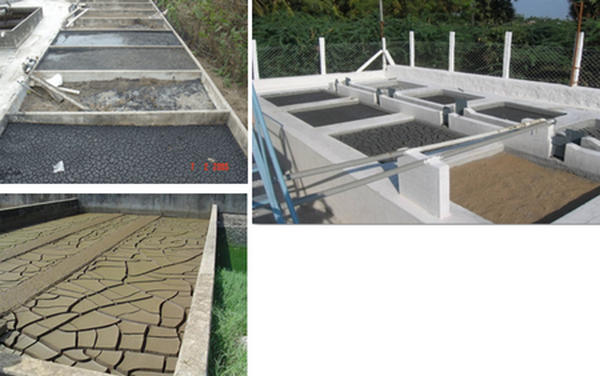Wastewater Treatment
ระบบบำบัดน้ำเสีย ระบบกำจัดไขมัน และน้ำมัน ระบบบำบัดน้ำเสียด้วยวิธีทางเคมี (Chemical Treatment System) ระบบบำบัดน้ำเสียด้วยวิธีทางชีวภาพ (Biological Treatment System)
Sand Drying Bed
Conventional sand drying beds are the most extensively used types of Sludge Drying Bed. It is often applied for small and medium sized facilities but however for bigger capacity, alternative means of dewatering sludge should be used instead. In large community with dense population, cost involved in regenerating the sands and later removal of sludge cake means that use of sand drying beds is not suitable in the long run.
Normal operation of the system involved sludge being placed on a bed layer and then allowed for drying to take place by either water draining through the mass and supporting sand bed or evaporation from the surface. Since water drains through, having an advanced drainage system is a must. The drying bed is typically partitioned into small individual units measuring 20 ft wide by 20 to 100 ft in lengths. Concrete bund wall is also necessary if you have intention to cover the beds.
After the sludge has been dried, the moisture level is usually left to about 60 percent. Compared to mechanical sludge dryers, this is considered far more efficient on removal of water. However, the only setback to the system is that sand drying beds will need large open space area and away from residential population to avoid foul odor complaint. There is also another type of system whereby it employs the use of greenhouse setup and the advantages of this are that weather is not a restriction and this can located anywhere since the odor generation can be contained.
Cost and efficiency measured on the system is based on calculated sludge bed loadings required on a per capita basis or either way, it can be determined by weight measurement required per square foot in a year. With wider area and more individual bed units, this will mean more dewatering of sludge can be carried out. The generated dried sludge can either be disposed of in a landfill or better still used as a soil conditioner.




